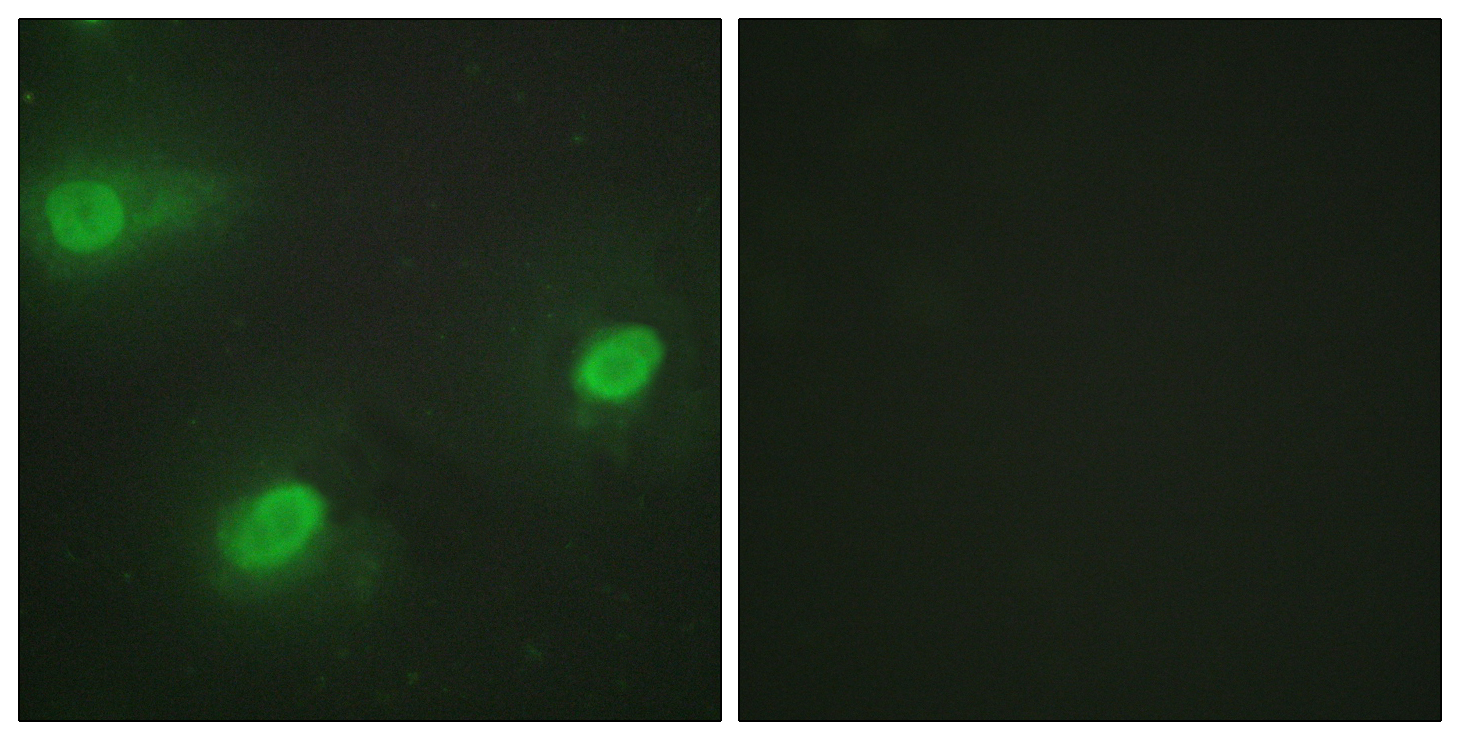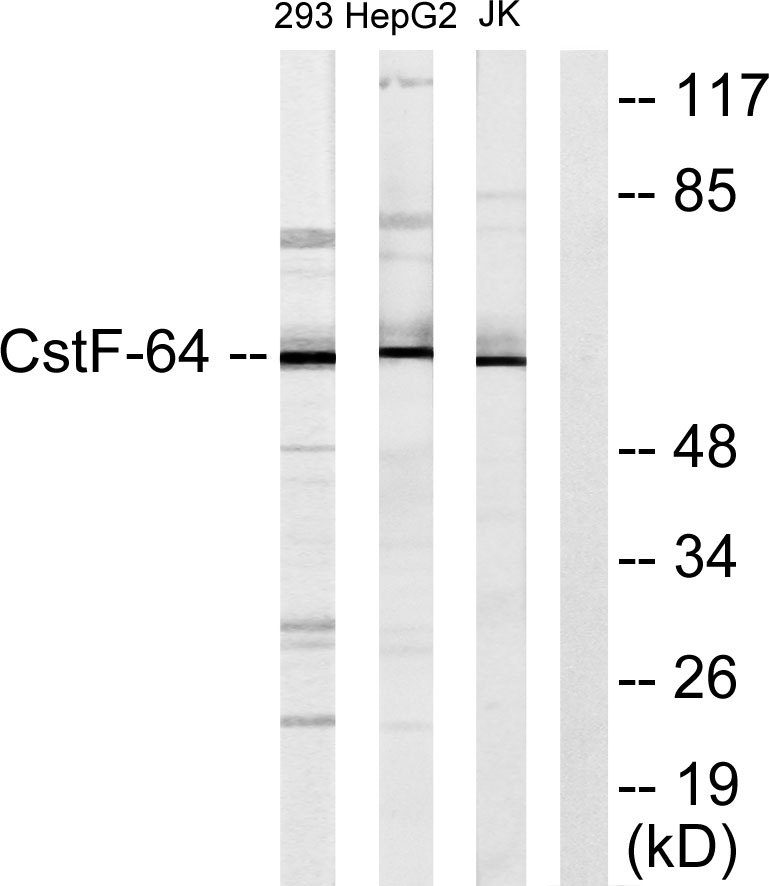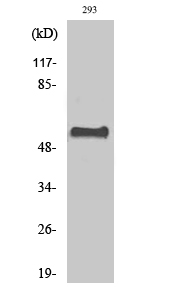产品名称
CstF-64 Rabbit Polyclonal Antibody
别名
CSTF2; Cleavage stimulation factor subunit 2; CF-1 64 kDa subunit; Cleavage stimulation factor 64 kDa subunit; CSTF 64 kDa subunit; CstF-64
蛋白名称
Cleavage stimulation factor subunit 2
存储缓冲液
Liquid in PBS containing 50% glycerol, 0.5% BSA and 0.02% New type preservative N.
Human Gene Link
http://www.ncbi.nlm.nih.gov/sites/entrez?db=gene&term=1478
Human Swissprot No.
P33240
Human Swissprot Link
http://www.uniprot.org/uniprotkb/P33240/entry
Mouse Gene Link
http://www.ncbi.nlm.nih.gov/sites/entrez?db=gene&term=108062
Mouse Swissprot No.
Q8BIQ5
Mouse Swissprot Link
http://www.uniprot.org/uniprot/Q8BIQ5
免疫原
The antiserum was produced against synthesized peptide derived from human CSTF2. AA range:11-60
特异性
CstF-64 Polyclonal Antibody detects endogenous levels of CstF-64 protein.
稀释度
WB 1:500 - 1:2000. IHC 1:100 - 1:300. IF 1:200 - 1:1000. ELISA: 1:5000. Not yet tested in other applications.
宿主
Polyclonal, Rabbit,IgG
背景介绍
This gene encodes a nuclear protein with an RRM (RNA recognition motif) domain. The protein is a member of the cleavage stimulation factor (CSTF) complex that is involved in the 3' end cleavage and polyadenylation of pre-mRNAs. Specifically, this protein binds GU-rich elements within the 3'-untranslated region of mRNAs. [provided by RefSeq, Jul 2008],
细胞定位
Nucleus . Localized with DDX1 in cleavage bodies.
功能
function:One of the multiple factors required for polyadenylation and 3'-end cleavage of mammalian pre-mRNAs. This subunit is directly involved in the binding to pre-mRNAs.,induction:Up-regulated during the G0 to S phase transition.,PTM:Phosphorylated upon DNA damage, probably by ATM or ATR.,similarity:Contains 1 RRM (RNA recognition motif) domain.,subunit:The CSTF complex is composed of CSTF1 (50 kDa subunit), CSTF2 (64 kDa subunit) and CSTF3 (77 kDa subunit). CSTF2 directly interacts with CSTF3, SYMPK and RPO2TC1. Interacts with HSF1 in heat-stressed cells. Interacts with FIP1L1.,
纯化
The antibody was affinity-purified from rabbit antiserum by affinity-chromatography using epitope-specific immunogen.



